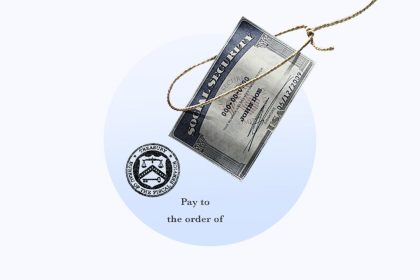Key takeaways
- A HELOC early payoff or prepayment penalty is a fee that lenders charge if borrowers settle their debt before the agreed-upon timeframe.
- Also referred to as an ‘early closure’ or ‘early termination fee,’ this penalty is typically either a percentage of the outstanding balance or a flat fee.
- While closing a HELOC early may incur a penalty, it can also save thousands of dollars in interest and improve your debt-to-income ratio.
A home equity line of credit (HELOC) can be a useful financial tool if you have sufficient equity in your home and need a stream of cash. It allows you to use that equity as collateral, borrowing against it as the need arises — similar to using a credit card. You’re given a decade or two to repay the funds in monthly installments.
Let’s say, though, that you want to settle your HELOC balance early. It’s doable — but be aware, your lender might charge a HELOC prepayment penalty.
How HELOCs work
A HELOC allows you to tap your home’s equity. Once you open a HELOC, you’ll have access to a line of credit. You can typically access the line of credit over a 10-year draw period, during which you’ll make interest-only payments. After the draw period, you’ll need to repay what you borrowed, along with any outstanding interest, usually over 10 or 20 years. HELOCs generally have variable interest rates, so your payments will change as rates fluctuate.
What is a prepayment penalty on a HELOC?
Once you enter your HELOC’s repayment period, you’ll have a specific time frame to pay off your outstanding balance. If you make the minimum payments, you’ll be following that time frame, geared to completely clearing the debt by the end of it.
However, you might choose to pay your balance off sooner by making a lump-sum payment or adding an extra amount to each payment. A HELOC early payoff penalty is a fee the HELOC lender charges if you make more than the minimum payment and settle the debt ahead of schedule. If you repay and close the line of credit within a certain time after opening it — when you’re still in the draw period — you may also be charged the penalty.
Why do lenders charge HELOC prepayment penalties?
Lenders primarily make money by charging interest on the products they offer, along with annual or maintenance fees. With a contractual product, like a HELOC, they calculate the profit they’ll make based on the interest for its entire term, or lifespan. If you settle and close your HELOC ahead of schedule, it curtails their income stream early. To compensate for that loss, they ding you with the fee.
Some lenders entice borrowers with a “no closing cost” HELOC. But these often come with the stipulation that the lender can recapture those closing costs through — wait for it — an early closure fee.
When do lenders charge prepayment penalties?
While the exact timing may vary from one lender to another, there are typically specific points during the HELOC’s lifecycle when a lender will charge an early payoff penalty.
- During the draw period: The draw period of a HELOC is the time during which you can borrow from your credit line. It typically lasts between five to 10 years. If you decide to close the HELOC during this period — especially within the first two years — lenders may charge a home equity loan prepayment penalty, says Chad Gammon, a financial planner with Arnold and Mote Wealth Management in Iowa City, Iowa. “This fee compensates for the interest they won’t earn because the line of credit is terminated before they expected,” he says.
- Within the repayment period: The repayment phase is the timeframe when you are no longer allowed to borrow money and must repay the balance owed. The repayment phase can last anywhere from 10 to 20 years. It’s possible to incur a HELOC early payoff penalty if you repay the loan in full before the term ends. “Some lenders specify that if you pay off and close the HELOC within a certain number of years from the start of the repayment period — often within the first three to five years — a prepayment penalty may apply,” says Gammon. “This time frame should be explicitly stated in your loan agreement.”
How much is a typical prepayment penalty on a HELOC?
The exact amount of a prepayment penalty varies from one lender to the next. In general, you can expect the fee to range from 2 percent to 5 percent of your loan. In some cases, the fee the lender charges may be based on how early you prepay the HELOC.
For instance, if you close a HELOC before three years has elapsed, you may pay a 3 percent penalty or you could be charged a 5 percent penalty for closing a HELOC before the five-year mark. Some lenders may opt to charge a flat fee for early termination, which usually amounts to a few hundred dollars. For example:
- Bank of America charges $450 if you terminate your account within 36 months of establishing a HELOC.
- Rockland Trust Bank might impose a $500 early termination fee if you close or cancel within 24 months of opening the line of credit.
- U.S. Bank may charge an early closure fee of 1 percent or a maximum of $500 if the credit line is closed and paid off within the first 30 months.
How to avoid prepayment penalties on a HELOC
Not all lenders charge a HELOC early payoff penalty. The ones that do tend to be banks. So if you’re concerned about incurring a penalty, it might make sense to go with a non-bank lender, provided you can still get an attractive rate.
The federal Truth in Lending Act (TILA) requires that lenders disclose all the costs, surcharges and other expenses associated with their HELOCs, including prepayment penalties. So, carefully read and make sure you understand the terms of your credit line before you actually commit to it. Bear in mind that these penalties can go by a variety of names, like “early closure” or “early termination” fee. Don’t hesitate to ask about any term that mystifies you.
If your line of credit does in fact have a prepayment penalty, you might choose to absorb that cost at payoff, or wait until the penalty period has passed before settling up.
“One strategy, if your lender charges penalties for closing the HELOC during the draw period, is to pay down the balance to zero and keep the line of credit open until the draw period expires,” explains Gammon. Once the draw period ends, most lenders will simply close a zero-balance HELOC with no penalty.
However, there could be other fees. “There is a chance that your HELOC could charge annual fees or inactivity fees, so be on the lookout for those charges and weigh the costs of keeping the line of credit open against the penalty of early closure,” says Gammon.
Can I negotiate prepayment penalty fees with my lender?
Yes, as with just about any loan feature, you have the option to negotiate a home equity loan prepayment penalty with your lender. There’s no guarantee a lender will agree to drop or modify it, of course, but it can be worth the effort.
Be sure to think through your approach and have a solid case for why the penalty should be removed or lowered, says Christina McCollum, a Kennewick, Washington-based producing market leader for Churchill Mortgage.
“Making a strong case would be in the borrower’s best interest,” says McCollum. “For example, is the borrower experiencing a hardship? How much time is left remaining on the draw period? These factors vary on a case-by-case basis, but can make a difference.”
If you have a longstanding relationship with the lender, try emphasizing that fact as well during negotiations. And don’t be afraid to go to a higher authority, if the customer rep you’re dealing with seems unable to do anything for you.
What are the benefits of paying off a HELOC early?
While you may incur a penalty for early repayment or termination of a HELOC, in some cases it can still make sense to eliminate the debt ahead of time. Among the advantages:
- Pay less interest: The repayment period for HELOCs often stretches over 10 to 20 years and you will be charged interest on the debt during that term. By paying off your HELOC years ahead of time, you can avoid paying a significant amount of interest. Often, the interest you avoid paying is far more than the penalty you incur for early termination.
- Streamline monthly payments: Having multiple debts to keep track of and repay each month can be challenging. Eliminating HELOC debt can streamline your bookkeeping.
- Reduce your debt-to-income ratio: Having too much debt compared to your income limits the amount of free cash you have available, and dampens your credit score. Paying off your HELOC early frees up cash in your monthly budget and improves your debt-to-income ratio, which is an important factor if you plan to apply for borrowing in the future.
- Increased financial security: Paying off a HELOC early can also give you a psychological boost and potentially improve your credit score by reducing the credit you are using. And of course, closing a HELOC eliminates a potential lien on your home.
Final word on HELOC prepayment penalties
While some HELOC lenders don’t charge a fee for prepayment, others do. So, before you commit to a line of credit, be sure you read and understand the fine print: That’s where prepayment penalty info is usually buried. By law, lenders have to indicate if they impose a penalty, but bear in mind that it could go by a more innocuous-sounding name, like “early cancelation fee” (“penalty” having rather negative connotations).
Whatever they call it, it’s an extra expense.
Given the thousands you’re saving in interest by prepaying, a penalty of a few hundred dollars is more of a nuisance than a drawback. Still, it’s good to be aware of it, and to talk your way out of it if you can.
Read the full article here


















